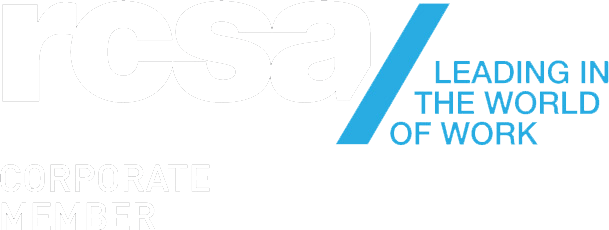What does The Great Resignation mean for Australians?

What is it?
It’s the phrase on everyone’s lips at the moment and perhaps with good reason. The looming threat of disruption due to people resigning in droves, or undoubtedly thinking about resigning, means that employers need to take action. While we try to predict what 2022 and beyond holds in the post covid corporate environment, one thing is for sure - businesses that act to genuinely address why their people may be looking to leave, and in turn do more to attract, engage, and retain talent will undoubtedly be better off.
The term was coined in late 2020 by Texas A&M University’s psychologist and professor Anthony Klotz in response to two developments he said had collided like a perfect storm: growing quit rates and the burnout and rethinking of work-life balance that followed COVID. Whilst ‘The Great Resignation’ has been largely evidenced in the US, elsewhere globally has also experienced employees calling it quits at alarming rates.
In Australia, the trend seems to have been delayed because of our ongoing and extended lockdowns but data from the people management platform Employment Hero does suggest that 48% of Australian workers are planning to look for a new job in the next 12 months and our recent salary survey data certainly backs this up. Moreover, even those who are quite satisfied in their current roles will potentially be faced with the prospect of an increase of new opportunities to explore as movement rises.
In April last year as COVID lockdowns took hold and businesses shut down operations, an estimated 780,000 Australians lost their jobs, with around 90 per cent of those lost in the first week of April 2020. An erratic 18 months later, as the country opens again, businesses ranging from hospitality to corporates of all sizes across all industries are struggling to fill those same roles, with many workers turning their noses up at job offers, opting instead to pursue new work-life balance aspirations. Whilst everyone won’t be living the life of luxury on white sandy beaches, there is undeniable talent shortages for many roles.

Resignation rates are highest among mid-career employees.
Employees between 30 and 45 years old have had the greatest increase in resignation rates, with an average increase of more than 20% between 2020 and 2021. While turnover is typically highest among younger employees, studies have found that over the last year, resignations actually decreased for workers in the 20 to 25 age range; this is likely due to a combination of their greater financial uncertainty and reduced demand for entry-level workers.
There are a few factors that can help to explain why the increase in resignations has been largely driven by these mid-level employees. First, it’s possible that the shift to remote work has led employers to feel that hiring people with little experience would be riskier than usual, since new employees won’t have the benefit of in-person training and guidance. This would create greater demand for mid-career employees, thus giving them greater leverage in securing new positions.
It’s also possible that many of these mid-level employees have delayed transitioning out of their roles due to the uncertainty caused by the pandemic, meaning that the boost we’ve seen over the last several months could be the result of more than a year’s worth of pent-up resignations.
And of course, many of these mid-career workers may have simply reached a breaking point after months and months of high workloads, hiring freezes, and other pressures such as home schooling or caring for elderly relatives, causing them to rethink their work and life goals.

Fact or fiction? Australian resignation rates are falling
Data collected each year by the Australian Bureau of Statistics suggests that in the 12 months to February 2021 almost 1.1 million Australians left their jobs.
That’s not unusual - in most years more than a million Aussies leave their jobs. Leaving and changing jobs is a sign of a healthy, well-functioning labour market. In the year to February 2021 the proportion of Australian workers switching jobs fell to an all-time low: 7.6% of employed Australians changed jobs that year, significantly down from the peak of 19.5% last seen in 1988-89. Of course, it is possible Australia’s labour market will change direction and follow that of the US labour market but there are caveats around what the US is coming out of compared with Australia’s current economic standing.
Speculation aside, if The Great Resignation is as likely and widespread as experts are predicting then employers need to buckle up for the ride and start working on some serious engagement and retention strategies, not to mention look at existing recruitment processes to ensure they are as attractive as can be. Even if resignation rates don’t escalate as excessively in Australia as they have elsewhere, the pursuit for talent will still be high.

The shift of power. What do companies need to consider?
The Great Resignation hands power to workers; the pendulum has shifted from the employer calling the shots as to where, how, and when employees will work.
COVID lockdowns have triggered a reset for people across the board. Perhaps during this past 18 months we have all had more time to reflect on those aspects of our lives which helped us, and many are now choosing to pursue those over things which exhaust us.
Company boards and senior management now consider the challenge of retaining the workforce to be among their top strategic priorities for 2021 — an increase of 81 per cent from the previous year. No doubt Australian employers face a rocky road ahead, with companies needing to attract workers with more than just a good salary, perks and what career opportunities will be on offer.
The Great Resignation is also being fuelled by fundamental shifts in how people think about the role of work in their lives. People are done with being overworked and undervalued. Many people are choosing to move away from climbing the corporate ladder, to emphasise other aspects of life. Some are embracing "career downsizing", looking for a job involving fewer hours or something with less responsibility and less stress or are opting for roles that can give them a whole new skillset.
Compounding candidates’ self-reflection and revaluation on corporate life, other more predictable reasons to call it a day include lack of promotion opportunities, non-competitive salaries, poor management, or toxic workplace cultures.
The statistics are clear: it costs a lot more to hire someone new than it does to retain existing staff even on a higher salary. The time lost running a new recruitment process, onboarding, and getting someone trained up is a huge loss of productivity for the business, especially if the exiting employee has had a wide impact on the organisation.

What employers need to think about? What candidates are holding in high regard?
The past 18 months have really brought home the importance of the human element. Employees are exhausted and crave personal investment and care. It’s more than just the financial incentives, it’s about the feeling of belonging and being valued. It’s about having meaningful relationships between employees, colleagues, and managers. It’s about having a sense of purpose and real connections.
More than anything, employers need to understand why people are choosing to leave, and what might attract them now. This isn’t easy but those who get it right will be out in front. It isn’t easy because leaders need to learn and understand their employees’ motivations – they need to demonstrate more empathy and compassion than ever before and it’s not one size fits all. Leaders may well need to reassess how they lead. What worked pre pandemic might not work well post pandemic.
Reports now conclude that the following are of significant consideration for those looking to move:
- Respect, purpose, and value
- Unity and cohesion
- Flexibility and autonomy
- Human connection
- Investment in a fulfilling employee experience
- Career development and advancement opportunities?
- Competitive salaries, bonuses, and perks
The dichotomy of what employees hold in high regard vs what employers believe important needs to be addressed for any real change to have an impact on retention rates. In a recent report by McKinsey & Company, findings indicated that employees felt the two most important factors in their employment was 1. being valued (by both organisation and manager) and 2. having sense of belonging. Conversely, employers believe work life balance to be most important and are therefore missing the mark. A company that is perceived as being too transactional in its dealings will fail on the relational front and to an extent, it could be argued that simply throwing more money at someone to stay is too far along the transactional lines.
The forced WFH models that were quickly adopted have now become an expectation for many employees and as employers navigate return to office protocols many factors need to be considered. Having location agnostic roles on offer can certainly help employers to attract candidates who may not have previously considered a move but equally a reason for employees to leave.

Sentiments about the vaccine?
A final consideration for employers is the hot topic of vaccination. Whilst vaccination rates across corporate Australia are high, and as some companies have adopted mandatory vaccines for employees, more thoughts are provoked including:
- Will vaccinated staff be willing to work alongside non-vaccinated colleagues?
- Will the older members of the work force decide to retire early?
- How will employers manage staff who have become accustomed to working from home?
- What longer term impacts will reduction of face-to-face human interaction have on company culture?
- Are hybrid models the best of both worlds?
Companies should look to their employees to help identify the potential risk and shape the solutions. Ultimately understanding employee motivators to subsequently drive best practice to manage any issues will be crucial. Those who can identify the essentials of a role and perhaps reconfigure positions and challenge the existing ‘norms’ will be viewed positively. Many questions remain, and answers will only unfold over time as employers combat the challenges that The Great Resignation may bring.
You might love it, you might hate it, but it is 100% a necessity. There is much publicised around how professional networks lead to career advancement, positive business opportunity, improved ability to innovate, quality of work, productivity and overall job satisfaction. Business networking is about creating mutually beneficial relationships that will serve both you and others in the network. Networking can open doors that you may not otherwise have access to, raise your profile, and provide you with ideas not previously considered. Your network can provide you with an immense opportunity for learning, growth, development, and all sorts of opportunities.





